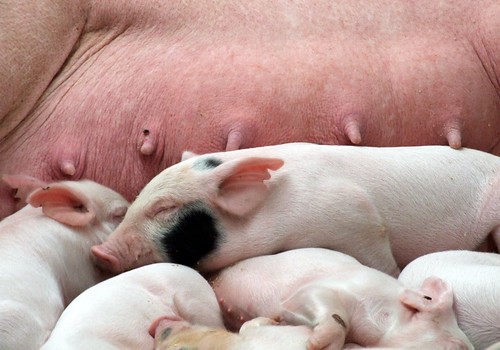They host all kinds of educational programs for kids including a summer camp, and they're worth checking out.

Photo from barto's flickr stream
Sows are not careful, are very big, and the babies are very small. In the wild, the sows lose many to being stepped on or sat on; that is why they have 8 to 10 in a litter. Also, the sows are very protective and very dangerous. I have gotten a broken leg and a dislocated ankle form a pig that decided that I needed to be dead. The agriculture teacher at Ramona High School got his leg bit and spent a week in intensive care. I was helping one of my students with her sow that had a stuck baby. As I was trying to pull the baby out of her, the sow attacked the student that had raised the sow as a pet from a baby. I do not have time to tell you all the close calls I have had over the years that I have raised pigs or with my agriculture students.
If we are going to raise pork, sows must be confined the 2 days before birth to the first few weeks after. A three week-old pig is still very small and we still have management that must be done on the babies at 3 weeks. All a sow wants to do for those first 3 weeks is eat, sleep, and nurse her young. I should have you come out and see how violent a sow will get when all you do is pick up a baby pig. A 400 pound sow will get her front legs and her mouth over a 4 foot wall to kill you. I have also seen three 400 pound sows chase down, kill, and homogenize a healthy and fit coyote.

Photo from karlfrankowski's flickr stream
Veal – cows must give birth to give milk. Only the best heifer calves (females) are kept and less than 1% of the bull calves are kept as bulls. All the rest are left to die in the pasture, sad but true. The margins are so tight and labor is so expensive that it costs more to try to raise the calves for meat than to let them die. Some are raised for veal in shelters that are enclosed on 3 sides and have a roof. They are made the way they are to keep the calf warm. The calf can turn around but not run and play. In California, the calves do have sunlight (at least in all of the dairies I have been on – I have not been on them all). But again, if the farmers are going to have a loss raising the calves they will just be put down on the first day.
No comments:
Post a Comment